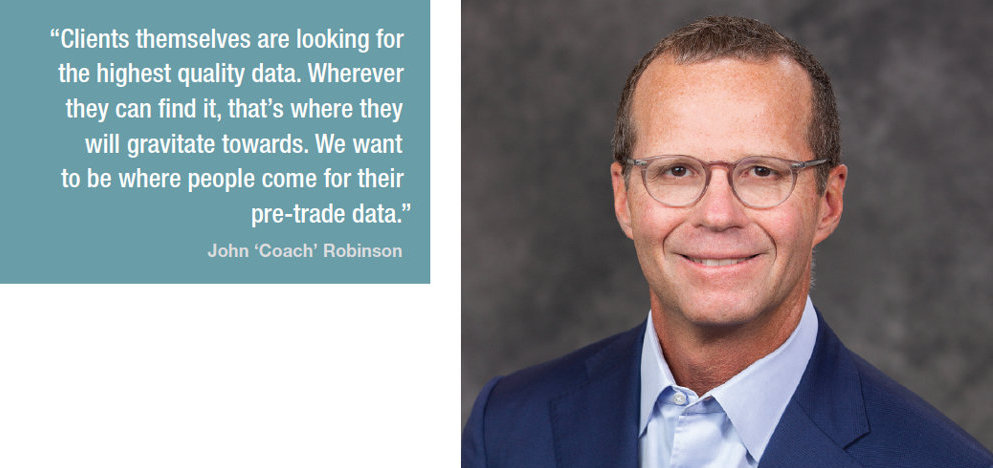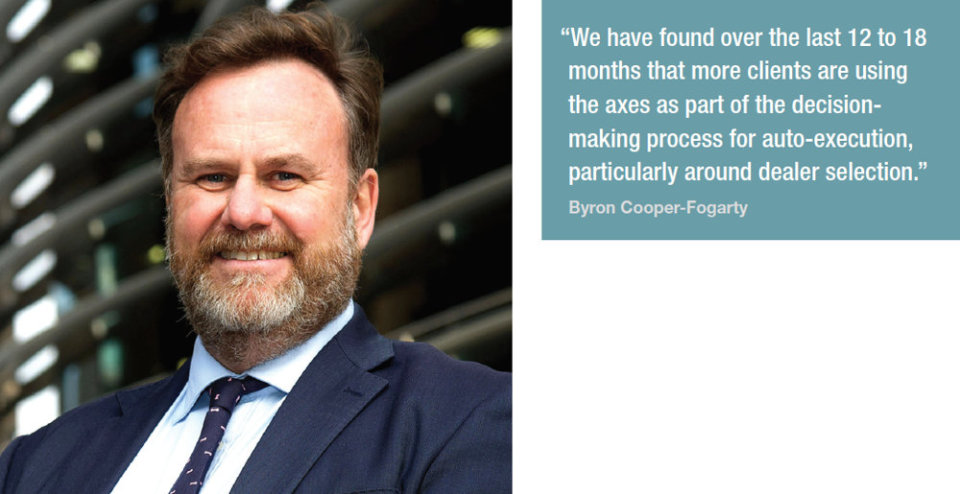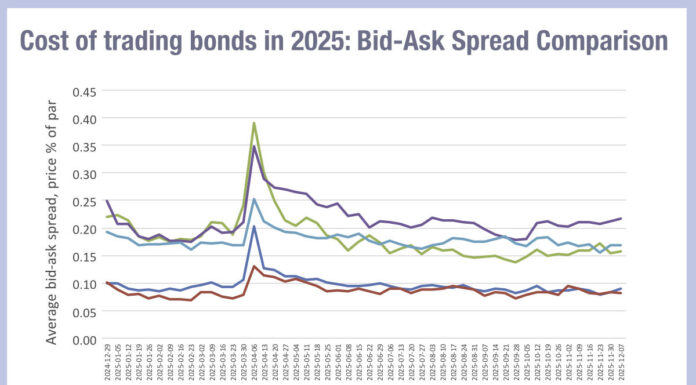Sharpening the axe: Neptune sees expanding opportunity for buy- and sell-side.
Buy-side firms are consuming more data than ever and Neptune is well placed to ensure quality and reliability of axes are elevated.
 With John Robinson joining Neptune and taking over the reins as CEO in Q3 this year, the axe distribution platform has significantly increased its potential. Known to all as ‘Coach’, Robinson, along with current interim CEO, Byron Cooper-Fogarty, tell The DESK how the firm’s leadership plan to steer a course towards better data quality for users through expansion of its membership, and evolution in line with market structure.
With John Robinson joining Neptune and taking over the reins as CEO in Q3 this year, the axe distribution platform has significantly increased its potential. Known to all as ‘Coach’, Robinson, along with current interim CEO, Byron Cooper-Fogarty, tell The DESK how the firm’s leadership plan to steer a course towards better data quality for users through expansion of its membership, and evolution in line with market structure.
What changes will Neptune be making to its service offering this year?
John ‘Coach’ Robinson (JCR): I spent my career at Morgan Stanley in credit, sales and trading in the US, and in the UK in emerging markets (EM) credit trading. I have been brought on board to fill the CEO role primarily for my network; I have got an extensive network of buy-side clients in the US as well as very good relationships in London, in the DM (developed markets) market as well as the EM credit markets. When I first got here last year we had just over 60 clients; now we are over 70 with more than 25 getting set up to take trials. My aspirational goal is to get to 100 high quality clients in the next 12 to 18 months.
Byron Cooper-Fogarty (BCF): Those 70 clients manage nearly US$34 trillion in global assets under management (AUM). With Coach and the US team, plus growth in Europe we can cast our net even wider and get more of those larger clients onboard.
JCR: We are also bringing in other market participants. I have been getting to know the heads of business and trading on the sell side, for the banks who are shareholders and participants that are not shareholders. I think we are down the road on several of those latter firms to join us, including niche liquidity providers in the ETF space and portfolio trading firms.
Is the understanding that standardisation does not mean disintermediation becoming accepted?
JCR: Absolutely, the clients themselves are looking for the highest quality data. Wherever they can find it, that’s where they will gravitate towards. We are owned and funded by dealers as a trusted source for them to put their highest quality data. We want to be where people come for their pre-trade data.

BCF: Dealers have realised that doing everything themselves is really not required, it just adds to cost in a business where everyone is trying to strip out costs. That’s where Neptune fits in. Attribution against the axes and links to execution are a key part of Neptune’s strategy. Neptune’s management and our board see that as a partnership rather than a build. Primarily we are really about the data, however helping our shareholders and participating banks have access to a cheaper way to trade electronically is of increasing importance.
JCR: We are a data provider. The big trading venues are all about getting trades done and maximising volumes, with some pre-trade capability. Our emphasis is on the other end of that.
Are there any new products or services launching over the next 12 months?
JCR: We have been very heavily into DM credit, starting a few years ago with European investment grade (IG) and European high yield (HY), then for the US. We now have more dollar product on Neptune than we do euro-product.
As far as expansion, we are seeing more data on EM credit, and on that we put together a working group of existing Neptune clients, asking what they were looking for to support the collaboration that we have. We asked the heads of the EM credit trading desk within our 29 dealer network to put more EM credit on and we are already getting immediate results. It’s not as easy as flicking a switch but we expect a dramatic pick up. We are also seeing demand from clients in the rates space in Europe and the US, in terms of European Government Bonds (EGBs), SSAs, covered bonds, and US Treasuries. Those are two areas that we expect to expand in heavily in the short to medium term.
Another untapped market that we are perfectly suited for is the municipal bond market in the US. We do have some dealers that are putting their muni data into Neptune, with quite a few more to go. That will be a longer-term project.
Any trends you are tracking in credit?
JCR: Within credit, we have seen a push by clients to see data from the algo trading desk and the portfolio trading desk. That is a real growth area in the marketplace for two reasons. One, in portfolio construction the buy side wants to see what the available inventories are from the portfolio trading desks, as they build out portfolios. That’s a new phenomenon since I joined. Secondly, clients are interested in applying AI to our algo axes to track flows which we see increasing as the buy side builds out their own algo trading capabilities.
In the past Neptune was about larger axes – an average axe size was US$5 million – where portfolio trading axes, tend to be US$1 million plus in size.
Only a year or two ago that seemed to be too small for the platform, but attitudes are changing about portfolio trades.
We don’t separate the axes into a separate place on Neptune, they are altogether. So, as far as the portfolio construction goes, from the tagged axes that are from the algo desk, or from the voice trading axes, they are all there for the clients.
Are there any other trading protocols that are increasing engagement with Neptune?
BCF: In Neptune the average axe size in credit is US$5 million or €5 million, with many larger axes as well. That is normally higher touch execution. But we have found over the last 12 to 18 months that more clients are using the axes as part of the decision-making process for auto-execution, particularly around dealer selection.
They do this generally by taking it through our application programming interface (API), so they can feed it into systems that they have already built or add it to off-the-shelf, rules-based systems. So, if a dealer is axed in a particular bond, even if it’s US$15 million, and someone is looking to trade US$250,000 then that dealer would get included in that auto-ex automatically because they are axed. For a while we have had people using the axes as part of a more manual RFQ basis. In both cases if a dealer is axed in the right direction, they are more likely to respond, and ideally at a better level.
Do you see any expansion of Neptune in non-trading uses?
JCR: Sure, the asset managers who get the most out of Neptune take in our data on a direct API and are able to circulate that and feed it through the organisation to portfolio managers, and to research analysts. It saves a lot of steps in the process if folks trying to create a portfolio, who say, “Let’s buy these bonds”’ find out there is just no liquidity before getting it to the trading desk. Getting this up and through the organisation is really a goal of ours, and the more sophisticated buy-side clients are already doing that.
The range of sophistication on the buy side is vast. You have some that are cutting edge and are clearly invested in technology. Others are well behind. They are going to be playing catch up, and they are going to have to increase their tech spend dramatically to get up to curve.
©Markets Media Europe 2025












